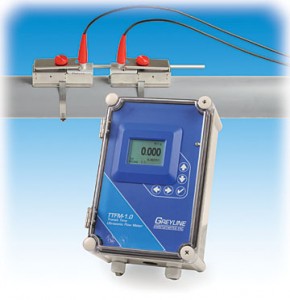 Last year, the U.S. Environmental Protection Agency (EPA) proposed new Effluent Limitation Guidelines (ELG) affecting steam electric power generating facilities. The new standards will change wastewater management requirements for many coal-fired power plants, including how they manage water balance. Although the new guidelines won’t be finalized until September 2015, with compliance expected by July 2017, now’s the time to figure out your water balance and water management plan.
Last year, the U.S. Environmental Protection Agency (EPA) proposed new Effluent Limitation Guidelines (ELG) affecting steam electric power generating facilities. The new standards will change wastewater management requirements for many coal-fired power plants, including how they manage water balance. Although the new guidelines won’t be finalized until September 2015, with compliance expected by July 2017, now’s the time to figure out your water balance and water management plan.
The Need for Updated ELG
Before I get into the details of what you can do to prepare, let’s back up a little bit and talk about why it was necessary to update ELG in the first place.
The current effluent guidelines and standards for the steam electric power industry were last updated more than 30 years ago, and they don’t adequately address the associated toxic metals discharged to surface waters from industry facilities. Regulations now on the books were focused on settling out particulates rather than treating dissolved pollutants.
Because of the widespread implementation of air pollution control equipment, particularly at coal-fired plants over the past 30 years, air pollution equipment has altered existing wastewater streams or created new wastewater streams at many power plants.
The new rules will affect utilities that have a discharge of flue gas desulfurization wastewater, gasification wastewater, discharge of fly ash or bottom ash transport water, leachate from ponds and landfills containing coal combustion residues, and other wastewater streams that come in contact with coal or coal combustion byproducts.
Develop a Water Balance Action Plan
Because of the outdated standards, your current water balance may be outdated and inaccurate. So what can you do? A great place to start is by developing an action plan to help determine water flows. Here are some steps you can take now so that you’ll be ready when the new guidelines go into effect.
- Identify existing flow transmitter that can be used. This is the low-hanging fruit.
- Get flow transmitter data into the plant distributed control system (DCS) or plant historian so you can see trends over time.
- Identify existing flow indicators — convert to flow transmitter or manually record data over time.
- Examine existing plant logs maintained by the plant chemistry staff; they may have recorded flow data that you need.
- Talk with operations folks; they will have a good general idea of about how much flow is going where in the plant.
- Add more flow transmitters where possible.
- Use portable ultrasonic flow meters to obtain flows for unmeasured streams.
- Use magnetic insertable flow meters to obtain flows for unmeasured streams.
- Use temporary Parshall flume to measure gravity flow lines.
- Calculate impossible-to-measure or unknown flows by difference if possible.
It’s not likely that you will have quality data on the proposed new limits for arsenic, mercury, selenium, and nitrates, so prepare a sampling plan to determine water quality information. You’ll want to sample at locations where the water quality changes from the process, and sample under various operating conditions.
Updating your understanding of the plant’s existing water balance is just the beginning. Once you know what the major water users and consumers are within the facility you can begin to look at opportunities to reduce water consumption and recycle more wastewater within the facility. This is important because the cost to treat wastewater streams for compliance with the proposed ELGs is directly proportional to the wastewater flow rates.
In most plants, opportunities to reduce or recycle exist, and they can result in significant cost savings for future wastewater treatment systems. Some obvious ideas include reverse osmosis reject to cooling tower makeup; cooling tower blow down to wet flue gas desulfurization (WFGD) and WFGD blow down for ash wetting. Not so obvious stuff includes avoiding excessive flushing practices; improving system efficiencies to achieve less water consumption; and looking at maintenance practices to determine whether you’re using water unnecessarily.
ELG compliance will be expensive, but understanding your water balance is critical. One thing is certain: Developing a plan now will save you a lot of headaches down the road. What steps have you taken, if any, to prepare for the impending guidelines? If you’d like to chat more about what steps you can take to prepare for ELG compliance, let’s connect on LinkedIn; I’d be happy to discuss your options.
Bryan Hansen is an associate chemical engineer in Burns & McDonnell’s Energy Division. He has 23 years of experience working on projects involving water and wastewater treatment process design and air pollution control equipment process design.
photo credit: Greyline Industries
